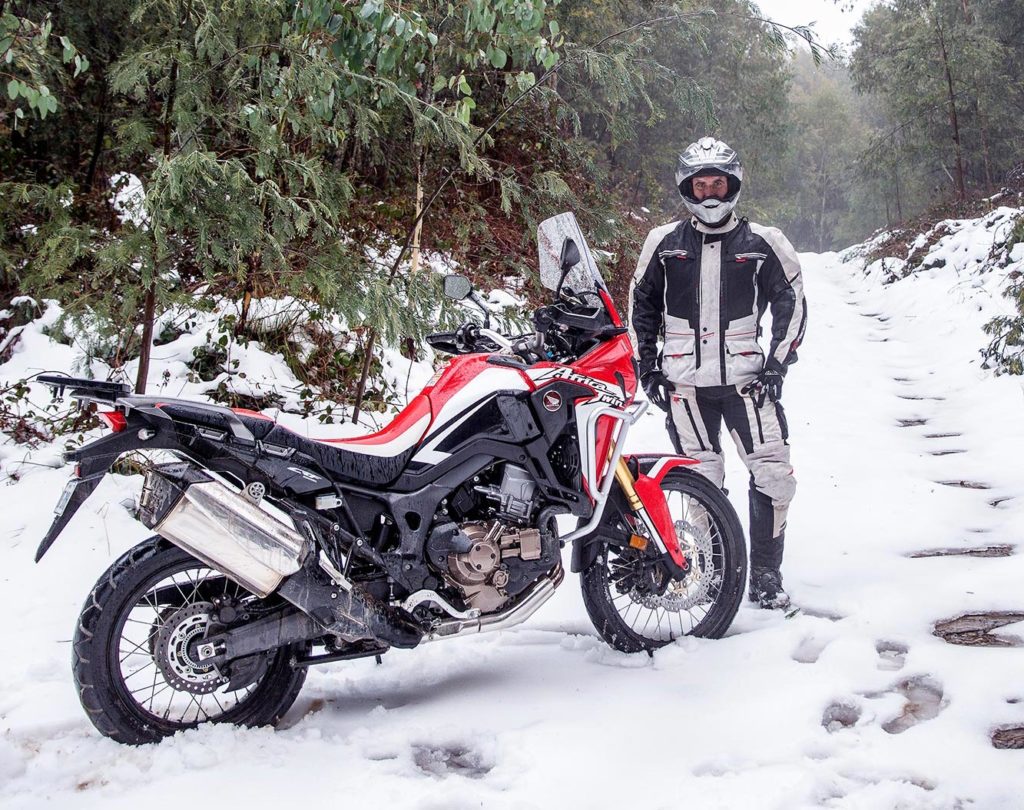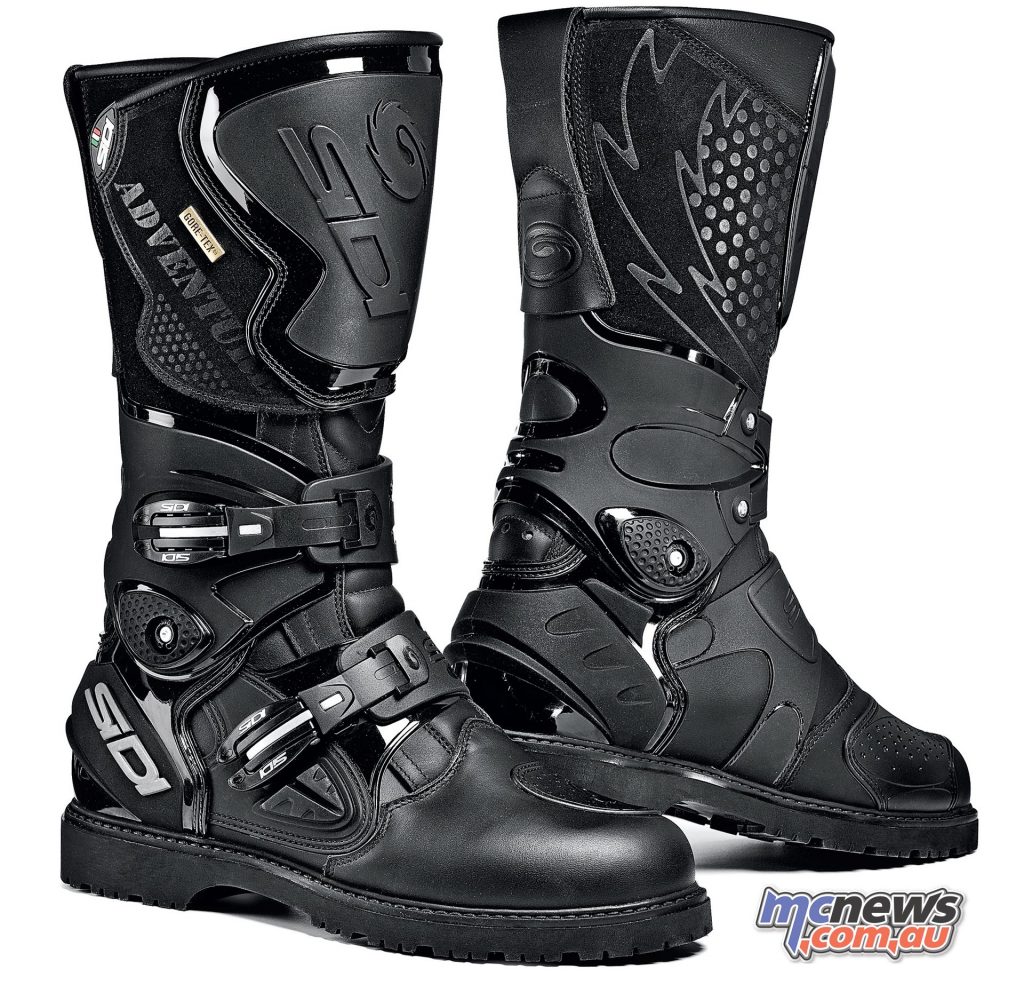Winter Warmers – How to stay warm riding in winter
With Phil Hall
And so, after a Summer that lasted until the end of May, Winter arrived, albeit a little late but now it is certainly in full swing. For those of us on the East Coast of Australia, its arrival was as vicious and unpleasant as any in recent memory. The first weekend in June was typified by an almost unprecedented East Coast Low with torrential rain, howling winds and widespread flooding. As is so often the way, the arrival of the ECL coincided with a series of king tides that exacerbated the flooding by not allowing the coastal streams to escape to the coastal lakes and to the ocean. My suburb was isolated by floodwaters for most of the worst day with 20k+ people unable to get either in or out.
Of course, any thought of riding was well down the list of priorities and both road and adventure riders have reported pretty average conditions in the aftermath of the wild weekend. But, ride some have and I have respect for them. I have been so busy getting preparation done for our two month motorhome tour of the NT and far north Queensland that my bike has stayed firmly fixed in the garage.
It doesn’t hurt, however, to have a quuck “refresher” on the basics of winter riding as well as some tips and tricks that I have gleaned over 40+ years of riding all year round. Unlike other countries where bikes get mothballed for the most of winter, we are privileged to have a more temperate climate that allows most of us to be able to ride regardless of the season. My comments will be mostly diirected towards road riding though many of the basics will also apply to off-road and adventure riding as well even though I don’t personally participate in these pursuits.
The first and most important rule of winter riding is to STAY WARM. I know this seems like a silly thing to say but there is nothing that drains your concentration more quickly than being cold while youu are riding. The gradual lowering of your body core temperature leads to errors and possibly worse as your body struggles to cope with the shivering and the brain starts to think more about how it can get you warm than the job that is in hand.
So, buy the best quality riding gear that you can, and there really is no excuse for this these days. Riding gear has never been better, more efficient and cheaper than it is right now. For those of us who struggled to survive through the Belstaff era, the arrival of Cordura, Goretex and other modern man-made fabrics was greeted with rejoicing!
My advice is that you buy a 3/4 length jacket rather than the waist-length items that are most popular these days. Keeping the kidney area and the lower extremities warm is a real priority. They are dearer than the shorter jackets but well worth the investment. As well, a longer jacket ensures a significant overlap over your weatherproof pants and saves that “gap issue” that can be very annoying. Remember that, the jacket MAY seem long enough to cover your lower back when you are standing up, trying it on in the shop, but that’s not the way you SIT when you’re riding.
Don’t worry if the jacket seems very heavy when you take it off the hanger, you won’t notice that when you are wearing it.
Next, some equally good quality weather-proof trousers. Again, these will appear heavy and bulky but it won’t be appparent once you start riding. Ensure the pants come well up on your body and that they have the ability to have the ends of the leg securely sealed against the ingress of water and cold air. If you happen to be a little “larger” than you’d like to be, I recommend a quick trip to Lowes and the purchase of a set of old-skool braces that will stop the pants from falling down.
Ed’s Note – In my experience the best all round suits come from BMW’s massive clothing range, but at around $2000 for a suit that’s a lot of coin to drop, but in my opinion worth it. I am pictured below in DriRider’s latest adventure riding kit, which at under $800 for the complete suit is a damn good bargain.

You’ll notice that I’m starting from the outside; now I’m going to start working inwards. It is here that the ladies have us well and truly beaten. They understand that LAYERS are the key to staying warm. It doesn’t matter how good your outer layer is, you need to back it up with what you wear underneath. While many weatherproof pants, for example, CAN be worn without another pair of trousers underneath them there are a couple of very good reasons why you shouldn’t do this. The first is the “layers” principle that I am expanding upon here and the second is that, usually in the middle of the day even winter days can get quite warm, and, if you’re stopping your ride in the middle of the day for a meal, you will be getting pretty hot, especially if you’re sitting in the sun. If you CAN’T take your outer layer OFF so that you’re not baking, you are destined to be very uncomfortable.
So a pair of jeans and a good sweatshirt in the next layer working inwards is the go. Depending on how cold it is going to be, a long-sleeved T shirt should be next and your underwear next to your skin. Speaking of skin, what you wear next to it has been the subject of much debate of late. Back in the day when I was living in Canberra and rode through more than 20 Canberra winters, it was considered that thermal underwear was the go. Canberra’s proximity to the snow fields and its hard core skiing fraternity meant that this was considered to be the best bet. However, my elementary knowledge of science as well as my own experience makes it questionable.
Thermal underwear is made with thousands of holes which seems counter-intuitive if you are trying to keep the cold out. It’s not. The way it works is that the holes trap the heat that is radiating off the body during exercise and keeps it next to the skin and so keeps the wearer warm. You can see where this is heading, can’t you? You are NOT exercising while you are riding, you’re sitting still and you are exposed to the wind regardless of how effective your weather gear is. So the effectiveness of thermals is reduced considerably. I’m not saying don’t wear them as they ARE another layer, but the current wisdom is that it’s best to wear SKINS-type compression garments next to the body. While in Summer they wick the heat away from the body, in winter they trap it next to the body much more effectively than thermals can.
So, remember, layers are your friend. As a sidebar to this, make sure that you leave room in your luggage area to store some clothing that you are going to discard during the warmer part of the day.
As for the rest of your winter riding kit, a balaclava can help seal the exposed area of your throat and stop the cold wind from going down inside your jacket. Good quality socks are essential; many riders I know use ski socks for obvious reasons. Make sure they’re not too thick, though, else you won’t be able to put your boots on!
Buy good quality gloves! The cheaper ones will keep your hands warm all right but they achieve weather-proofing with BULK and will restrict your “feel” at the controls. Heated Hand Grips are now very sophisticated and are an essential but don’t obviate the need for good gloves because they primarily warm only the palms and insides of your fingers, not the outer part of your fingers that are exposed to the cold wind. I’ve tried silk gloves as “inners” but I didn’t find they helped a lot; they also added to the bulk so I abandoned the idea.
There are winter boots available that are very effective as well. Again, the same caveat applies. Buy the most expensive you can because the cheaper items achieve warmth by adding bulk and weight and you don’t need either of these.
(Ed’s note, in my experience Alpinestars and Sidi make the best motorcycle boots, be that for the road, all round adventure riding or purely off-road).

My budget doesn’t stretch to the latest range of electically heated vests, pants and gloves but I’m sure they are wonderful. Some bikes are now fitted with electrically heated SEATS even. Sheer looxury!
As for riding tips, adjust your riding to the conditions; simplistic, yes, but necessary. Winter roads can be wet, icy and littered with foreign objects. Make your runs shorter than you do in the milder months. Stop and warm up more often. Beware of coffee and tea to keep you warm. Both are diuretics and the combination of a mug of hot drink and the cold conditions soon starts sending messages to your bladder that you don’t want it to be receiving. Hot chocolate will warm you but won’t send you searching for the loo prematurely. And, on the subject, eat well; it will keep you warm inside.
Riding in winter can be most enjoyable and the arrival of the cold weather should not send you scurrying for your pipe and slippers and the battery tender for your bike. Get out there and see nature in a different way and you won’t be sorry.
Feel free to share your own experiences and tips below























